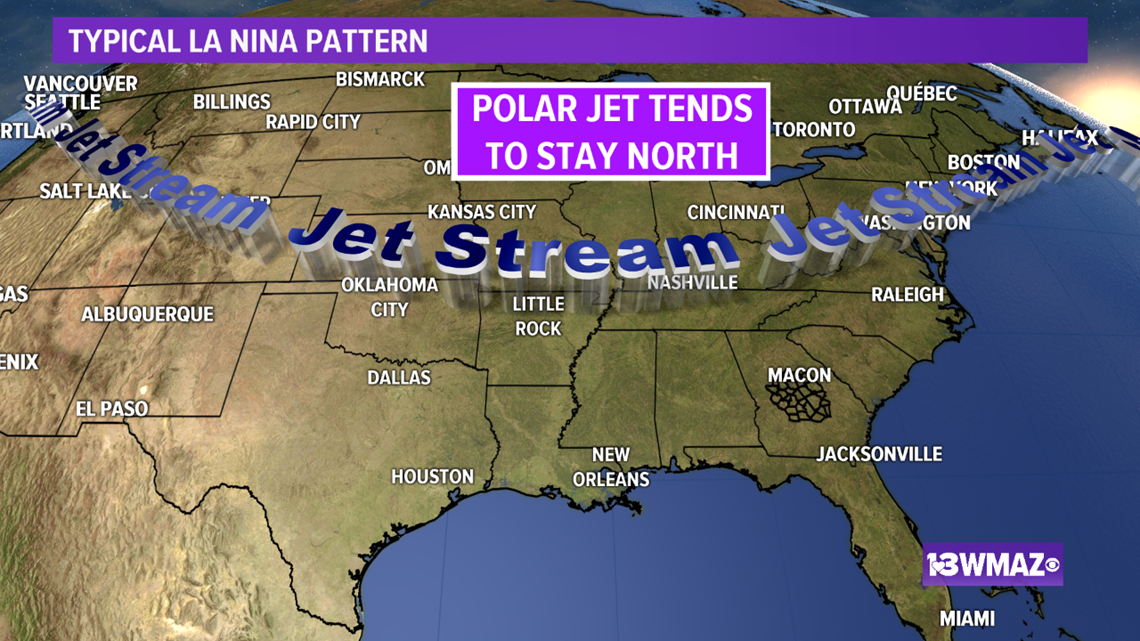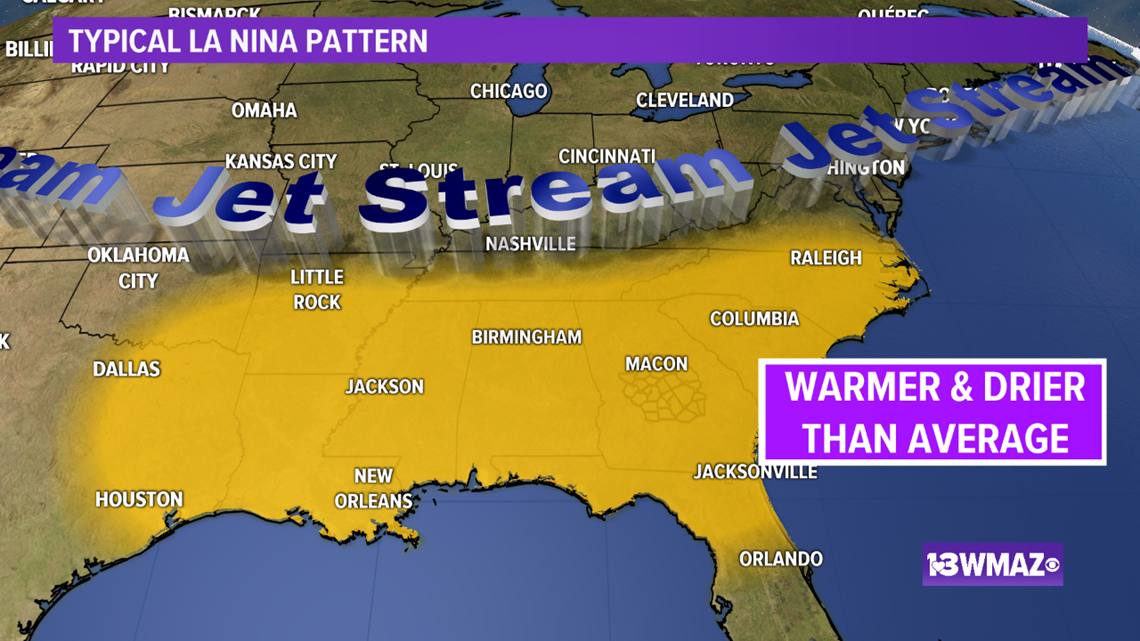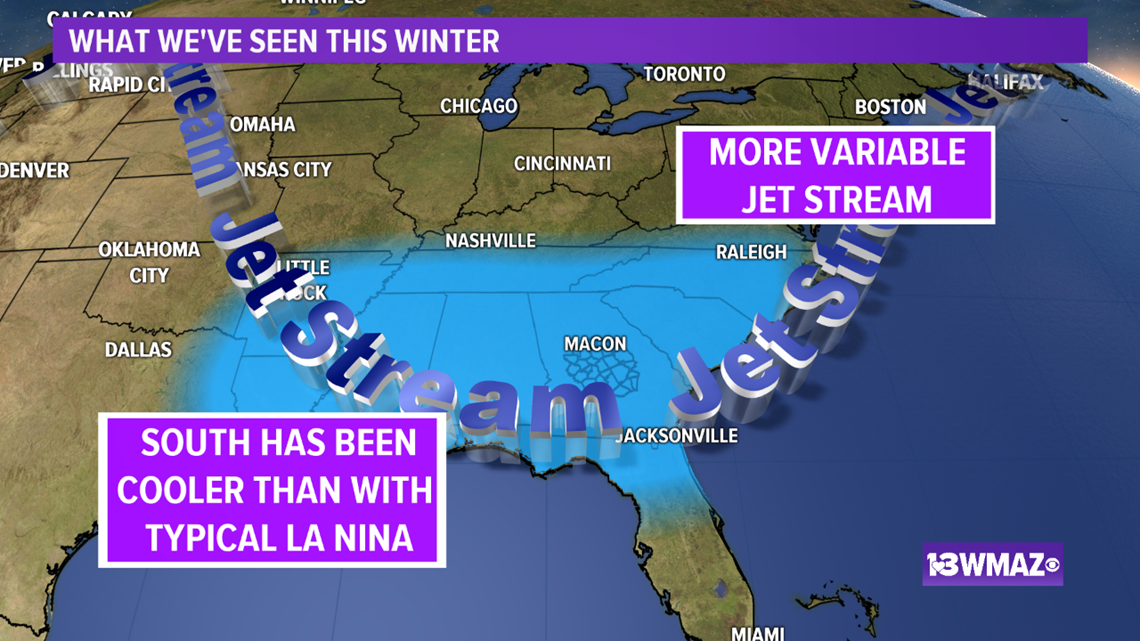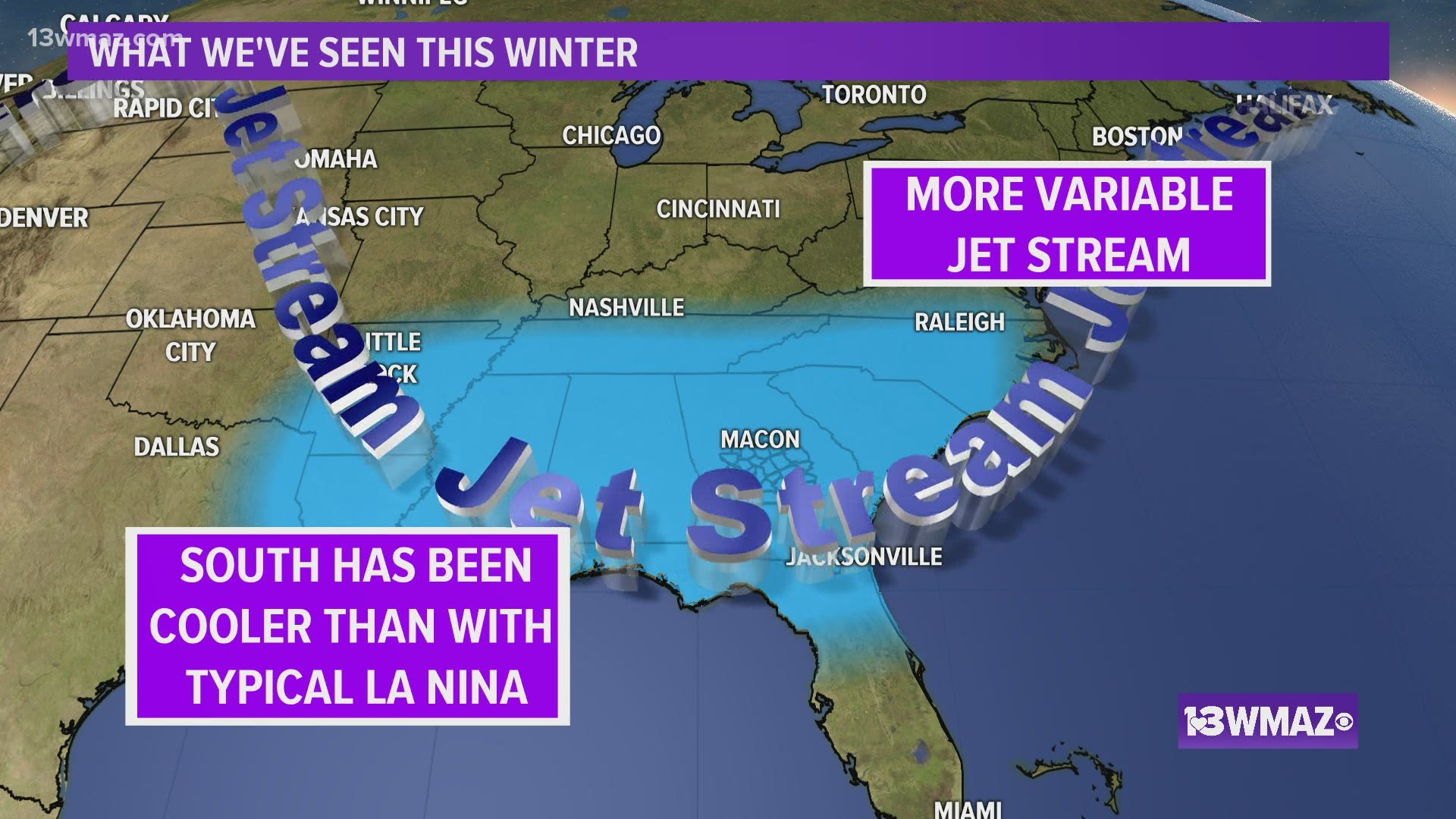MACON, Ga. — Back in August 2020, La Niña conditions were present in the Pacific. This means that waters in the equatorial Pacific were cooler than normal, and that was expected to persist through the wintertime.
It has, but this year's La Niña hasn't had the same effect on weather in the South that most La Niña's do. Meaning, the weather hasn't been as warm or dry as it could have been given the presence of La Niña.
Let's break it down. During a typical La Niña, the polar jet stream is stronger and is normally further to the north. This keep the cold, arctic air bottled up in Canada and other arctic regions.


With a stronger and more northerly polar jet stream, the cold arctic air has no easy path to the Southern part of the U.S., including Central Georgia. This leaves the South with warmer than average conditions. Fewer storm systems typically move through with this setup, which also leaves us drier than average.


This year has been a little different. We haven't been as dry or near as warm as we could be with La Niña, and that's because La Niña isn't the only factor in play.
Earlier this winter, an event called Sudden Stratospheric Warming occurred over the Arctic. This is not unheard of. It actually occurs around six times per decade.
Basically, temperatures very high above the North Pole warmed and this warming has an effect on the jet stream.
The jet stream weakens and becomes more wobbly or wavy. This waviness has allowed cold air to move southward at times, and we've felt that here!
With a more variable jet stream, we've seen long wave troughs set up over the eastern part of the country. On more than one occasion this winter, our temperatures have plunged into the 20s thanks to help from this setup.
While temperatures for the season are technically still a little above the average, they aren't near as far above average as one would expect, so for Central Georgia and much of the South, this is a cooler than expected La Niña winter.


There are signs we could see another big dip in the jet stream come our way later this month, so we might not be done with arctic blasts for the winter quite yet!
RELATED HEADLINES

